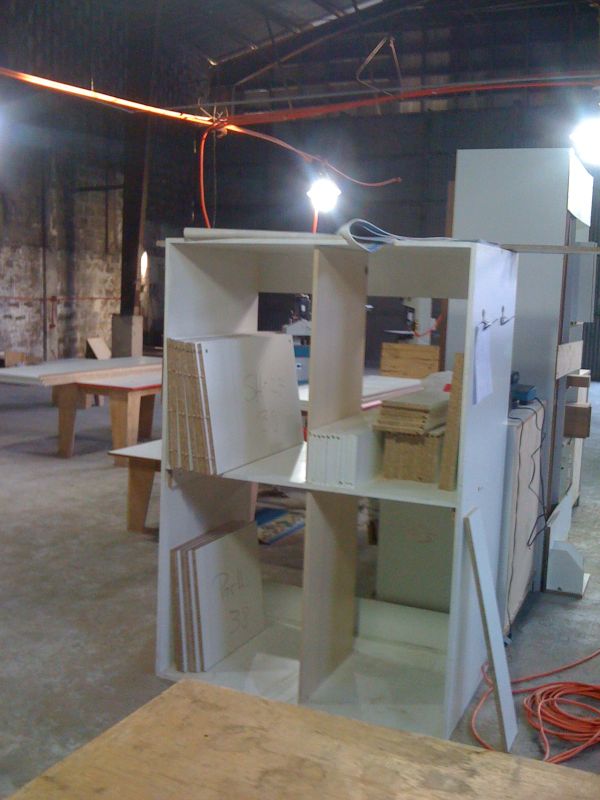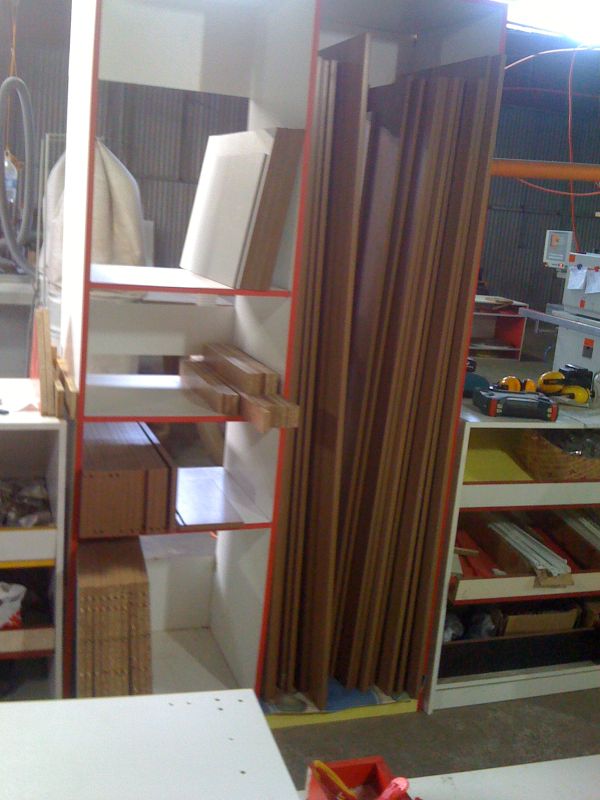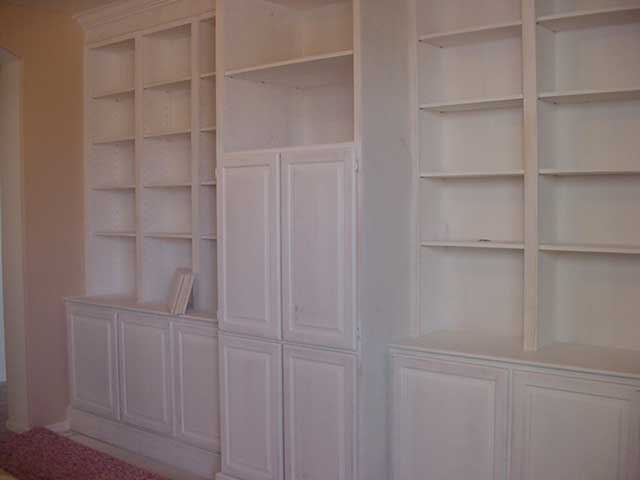Question
To those of you who use roller conveyor to transport stacks of parts from station to station in the shop, how do you sort through the stack to find the parts you need once they reach the assembly point? This question assumes that you do not group your parts at the cutting stage on a cabinet by cabinet basis. It seems to me that you will have stacks of parts sorted by part type, but willy nilly in terms of individual product number.
I can envision a device built into the roller conveyor that would work similar to a bundle turner that would upend the stack of parts to a vertical orientation instead of a flat horizontal orientation. This would allow you to remove just the part you want without having to move all other parts on top of the one you need. I can't say that I've ever seen such a device in any shop, but there must be something out there to cope with this issue.
Forum Responses
(Cabinetmaking Forum)
From contributor Y:
We've been using roller conveyor quite a while using a home brew system. I don't know how real places do it but here's our method: As parts come off the router or panel saw they are labeled, sorted by next operation and banding color. The operators are experienced and try to logically stack for the next guy, typically banding. There are two transfer cars at the start that can be used to move parts between four rows of conveyor, not always needed. After those four rows of conveyor there are two more transfer cars that can move parts to the input of the bander, pocket machine, bore and insert machine or six rows that work as accumulators and the line nearest the bander as a return for those parts needing multiple bands.
Parts coming off the bander are sorted to either next operation ( assembly, pocket or doweling) or by the case they will be used in. We don't use a powered return conveyor because only parts like doors get multiple bands and so to save the input operator from needing to sort & stack we use an off bearer. The off bearer job can be like a Chinese fire drill in sorting and keeping up with the parts traveling down the chain at a foot a second.
The stack sorted at the end of the bander has all the parts needed for the dowel cases so they can all go to the doweling cell. Parts that will go to the assembly benches are sorted by case as they exit the bander and are moved to the accumulation rows by a transfer car that runs between the accumulator rows and the ten sections of conveyor that feed the assembly benches. As all the parts for a case are accumulated the shop foreman will move them to the conveyor section leading to the appropriate bench. There are at least two conveyor sections for each bench so usually little or no un-stacking is required to get to the parts desired. The assembly benches are all on hydraulic lifts. Many of the cases are quite large (store fixtures).
Is it a perfect system? No, but the plan was to have at least 80% of the parts get where they need to be without a lot of fooling around. The one place where parts are handled without adding value is at the input to the dowel cell. The case sides have been bored in the nest. When they arrive on the transfer car at the dowel cell they are moved to vertical divider slots between the bore and insert machine and the assembly bench. (No value added in moving parts)! When the parts being bored and doweled come off the machine they are placed in the same slot with their mating parts. There are slots for six cases to accumulate. On the other side of this is the assembly bench where hardware is installed then the holes have glue injected and the case is knocked together for the case clamp. No one has to take over two steps to do the next operation.
Our conveyors were all set at 30" to avoid bending over. Stacks are kept low by controlling batch size, easily done with a nested system. Counting the transfer cars there are 480' feet of 24" conveyor. Transfer car tracks were let into the concrete floor. They are nothing more than small channel irons that guide the transfer cars by pieces of bar welded to adjustable guides on the cars. The guides have tapered ends so they can plow the tracks if needed (saw dust etc.) I had a welding shop make the transfer cars and put a section of conveyor on top. The clearance between the ends of the cars and the conveyors is 10". Just enough to walk through (sideways) and also allow stacks to cross the gap without tipping into it. When there are lots of very small parts they are put on a larger part. The transfer cars have handles on both sides, in the center of the car, to push/pull to keep them moving evenly and provide a grip point outside of the stacks. The wheels are 6" HD casters with hard urethane tires. They run on the shop floor not in the tracks. This scheme has no trip hazards and allows hand trucks or other carts to move freely over the tracks.
This is a homemade solution! All the conveyor were bought used. We took it apart and painted the rails cream and the stands orange. There is a mixture of manufacturer but since they are all painted the same is not evident. I like a clean neat looking shop.
For my somewhat smaller operation I run the case work and final assembly as a single cell and organize my cutting by the cabinet, except when we do large batches of closets. When we get an apartment or condo finish out that has a lot of closets (these are not closet systems, they are 2100mm tall stand alone assemblies) we sort by part. I can usually produce 15 or 20 of these in a shift, but only but part batching.
I have racks to keep all the parts organized near the assembly area. These racks are centrally located between the boring machines, saw/bander and the assembly area. Parts are cut and banded them placed in the rack with their like parts (sides, top/bottoms, fixed shelves, drawer sides, drawer backs, etc). The racks are close enough to all the machining cells that no conveyers are necessary. Even if I had a beam saw I would not need a conveyor, just a buffer table to hold parts waiting to be banded. After banding all the parts are sorted in the racks. We never have to dig through piles because the piles never develop. This requires that your machines be set up in a way to facilitate this kind of flow.
Not sure if this will work for you, but it works for very well at a throughput of 50 sheets a shift and I am certain it would work for more than 70. Greater than that and I would break the batching into a size that allows the assembler to start on assembly sooner - for example 20 assemblies at a time.


The only way to achieve any semblance of efficiency in my mind is to finish all of the parts at the same time. Perhaps, if you only built products that didn't require any finishing, this would be practical. Just my opinion though. That leaves me with still needing to stand the batches of completed parts on edge once they reach the final department. It is at this time that the individual parts for each cabinet are pulled from the stack, horizontal construction bored, hardware attached, and placed into vertical cubbies for the assembler to access.
